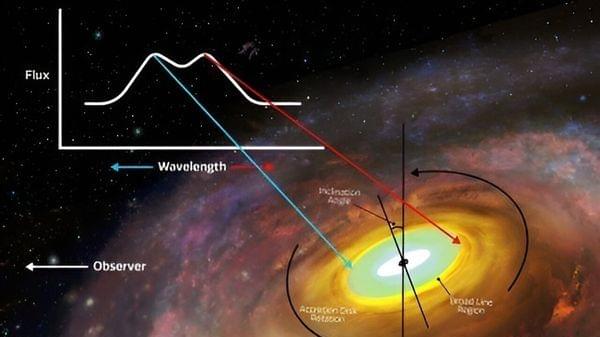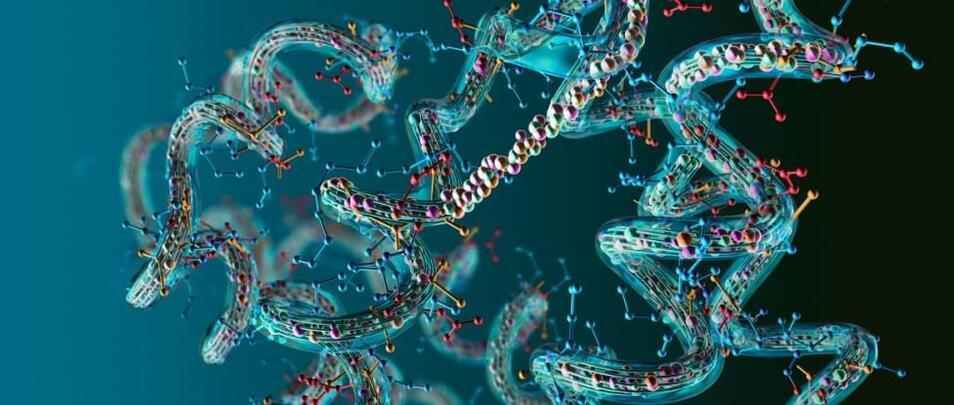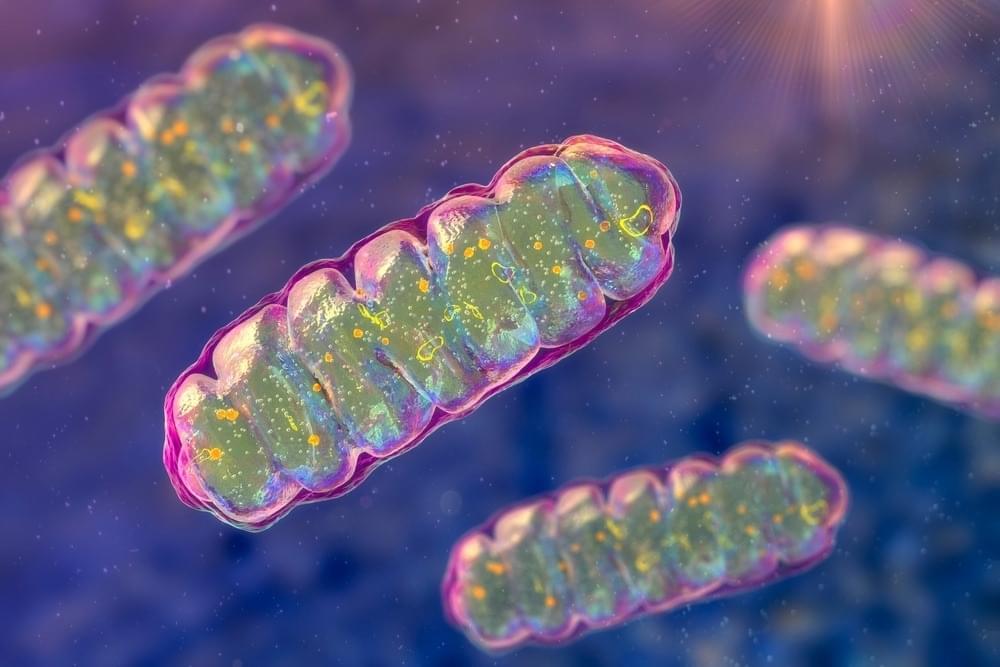We may have become the most complex living creature in part by accident and replication of error.
Category: evolution – Page 78

The evolution of AAVs in cell and gene therapy
AAV development for cell and gene therapy in 2023 is being impacted by manufacturing and regulation challenges, however advancing technologies offer opportunity, according to leaders in the field.
As proven by recent regulatory approvals sweeping the cell and gene therapy industry, particularly within Europe and the US, these pioneering treatments have demonstrated great capacity in helping to resolve hard-to-treat diseases.

Supermassive black hole accretion disk seen ‘on the edge’ for 1st time
Astronomers have observed the outer edge of a disk of matter surrounding a feeding supermassive black hole for the first time.
These observations could help scientists better measure the structures that surround these cosmic monsters, understand how black holes feed on those structures and put together how this feeding influences the evolution of galaxies that house such phenomena.
Michael Russel: On the Emergence of Life Through “Negative” Entropy Trapping
Dr Michael Russel’s lecture at the Molecular Frontiers Symposium at the Royal Swedish Academy of Sciences in Stockholm, Sweden, May 2011. The topic of the symposium was “Origin of Life and Molecular Evolution”. Check our YouTube channel for more exciting science videos! For more information, visit www.molecularfrontiers.org.
Help us caption & translate this video!

Scientists Discover ‘Pure Math’ Is Written Into Evolutionary Genetics
Mathematicians delight in the beauty of math that so many of us don’t see. But nature is a wonderful realm in which to observe beauty born out of mathematical relationships.
The natural world provides seemingly endless patterns underpinned by numbers – if we can recognize them.
Luckily for us, a motley team of researchers has just uncovered another striking connection between math and nature; between one of the purest forms of mathematics, number theory, and the mechanisms governing the evolution of life on molecular scales, genetics.

Earth’s ancient breath: Study links atmospheric oxygen and mantle chemistry
An international team of scientists has found a crucial link between the chemistry of Earth’s deep mantle and its early atmosphere. The study uncovers new insights into the evolution of life on our planet and the surge of atmospheric oxygen.
The scientists focused their investigation on magmas formed in ancient subduction zones, areas where portions of Earth’s crust sink back into the mantle.
The experts examined a critical juncture in Earth’s history known as the Great Oxidation Event (GOE), which occurred between 2.1 and 2.4 billion years ago.
Michael Levin: “Non-neural, developmental bioelectricity as a precursor for cognition”
Plenary Talk by Michael Levin on “Non-neural, developmental bioelectricity as a precursor for cognition: Evolution, synthetic organisms, and biomedicine” at the Virtual Miniature Brain Machinery Retreat, September 16, 2021. Introduction by William Baker.
Michael Levin.
Director of the Allen Discovery Center.
Tufts University.
Sponsored by the National Science Foundation, the University of Illinois at Urbana-Champaign, and the Beckman Institute for Advanced Science & Technology. This video was supported by the National Science Foundation under grant 1735252.
The collective intelligence of cells during morphogenesis as a model for cognition beyond the brain
Michael Levin talk for the Mind, Technology, and Society (MTS) talk series at UC Merced on January 23, 2023. Abstract: Each of us makes the remarkable journey from the physics and chemistry of a quiescentunfertilized egg to that of a complex human being. How can we understand the continuousprocesses that scale up minds from the tiny physiological competencies of single cells to the large-scale metacognitive capacities of large brains? Here, I will describe a framework known as TAME-Technological Approach to Mind Everywhere — which enables identifying, understanding, andrelating to unconventional cognitive agents. I will use the example of the collective intelligence ofcells during morphogenesis to illustrate how we can begin to widen the lessons of multiscale neuroscience well beyond neurons. This will be essential as we head into a future that will bepopulated by a wide range of evolved, designed, and hybrid beings with novel bodies and novelminds. I will conclude with a case study of our new synthetic biorobot (Xenobots) and a discussionof the implications of these ideas for evolution, biomedicine, and ethics.

The potential of targeting mitochondria-associated programmed cell death for age-related disease treatment
Scientists have recently reviewed the available literature to examine the critical roles played by mitochondria in maintaining homeostasis. The review summarized the involvement of mitochondria in age-related disease progression and highlighted its potential as a therapeutic target of these diseases. This review has been published in Experimental & Molecular Medicine.
Mitochondria is a cytoplasmic organelle in most eukaryotic cells and is enclosed by two phospholipid membranes: the inner mitochondrial membrane (IMM) and outer mitochondrial membrane (OMM). These membranes separate functionally compartmentalized structures, i.e., matrix and intermembrane space. Mitochondria contain a unique genetic code, mitochondrial DNA (mtDNA).
During evolution, most mitochondrial genes were lost or translocated to nuclei. However, genes that remained in mtDNA encode for essential translational apparatus, i.e., ribosomal RNAs and transfer RNAs. In addition, these genes also encode proteins that are key components of oxidative phosphorylation system (OXPHOS) complexes embedded in the IMM.
Can cells think? | Michael Levin
We know that humans are an intelligent species. But this biologist breaks down the intelligence of each of our cells — and it will blow your mind.
❍ Subscribe to The Well on YouTube: https://bit.ly/welcometothewell.
❍ Up next: An evolutionary history of the human brain, in 7 minutes https://www.youtube.com/watch?v=NGArM23mMNM
Michael Levin, a developmental biologist at Tufts University, challenges conventional notions of intelligence, arguing that it is inherently collective rather than individual.
Levin explains that we are collections of cells, with each cell possessing competencies developed from their evolution from unicellular organisms. This forms a multi-scale competency architecture, where each level, from cells to tissues to organs, is solving problems within their unique spaces.
Levin emphasizes that properly recognizing intelligence, which spans different scales of existence, is vital for understanding life’s complexities. And this perspective suggests a radical shift in understanding ourselves and the world around us, acknowledging the cognitive abilities present at every level of our existence.
Read the full video transcript: https://bigthink.com/the-well/intelligence-can-cells-think.